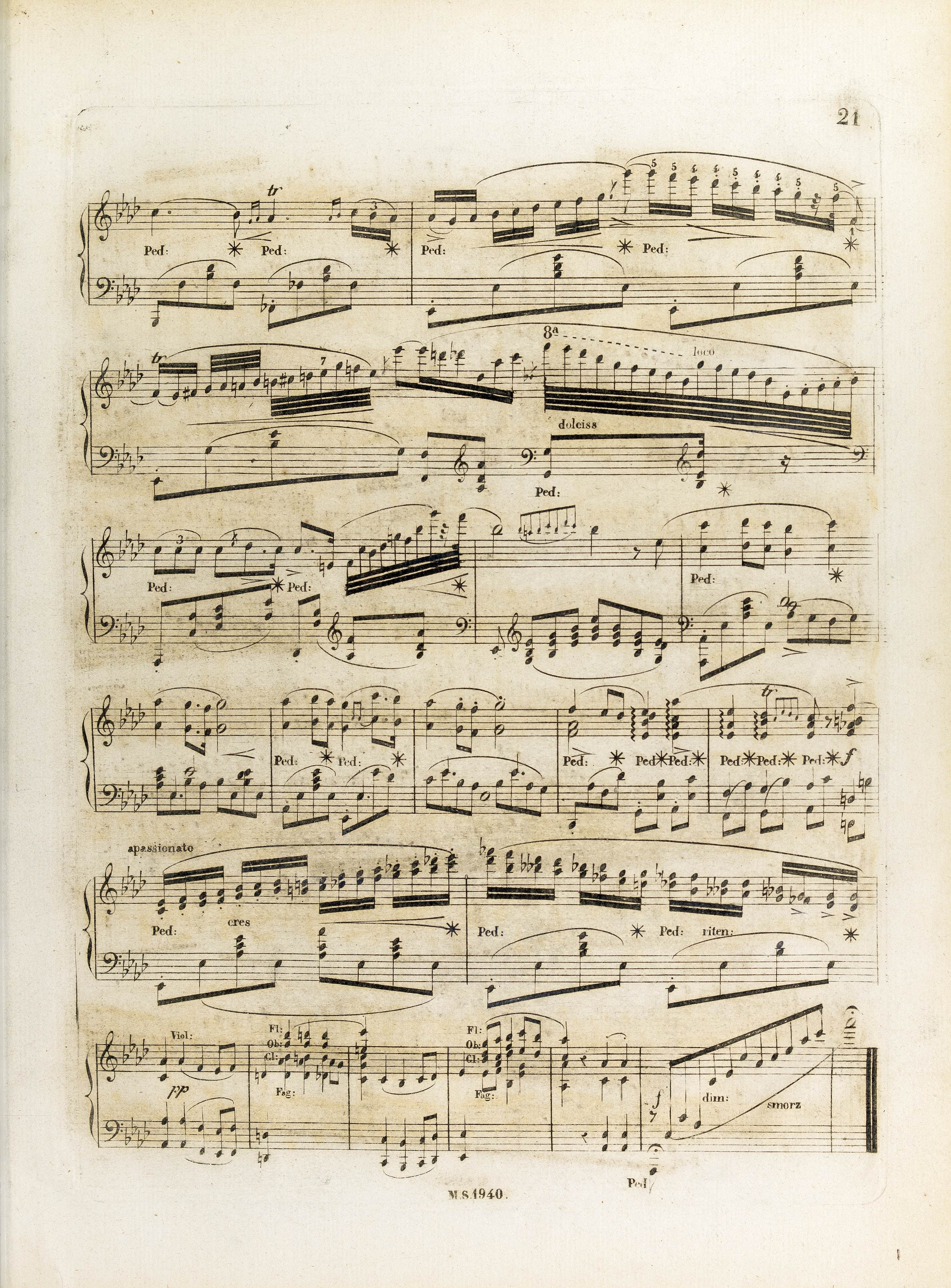Op. 2, Variations in B♭ major
Op. 10, 12 Etudes
Op. 11, Concerto in E minor
Op. 21, Concerto in F minor
Op. 22, Polonaise in E♭ major
Op. 24, 4 Mazurkas
Op. 25, 12 Etudes
Op. 26, 2 Polonaises
Op. 27, 2 Nocturnes
Op. 28, 24 Preludes
Op. 30, 4 Mazurkas
Op. 35, Sonata in B♭ minor
Op. 50, 3 Mazurkas
Op. 63, 3 Mazurkas
Op. 64, 3 Waltzes
(Op. 4), Sonata in C minor




Op. 21, Concerto in F minor, Mvt II
The sign concerning the 1st note in the bar has the form of a dash and a dot in A. The dash is not entirely straight, so that in GE (→FE→EE) the combination was interpreted as a fermata. We adopt this interpretation to the main text:
- Chopin wrote a slightly similar flat sign of fermata in bar 6;
- Chopin did not question such an interpretation both in the proofreading (GE1 and FE) and in the pupils' copies.
However, according to us, it cannot be excluded that Chopin meant here another combination of tenuto and staccato marks, as in bars 18 and 86.
Compare the passage in the sources »
category imprint: Graphic ambiguousness
notation: Articulation, Accents, Hairpins



